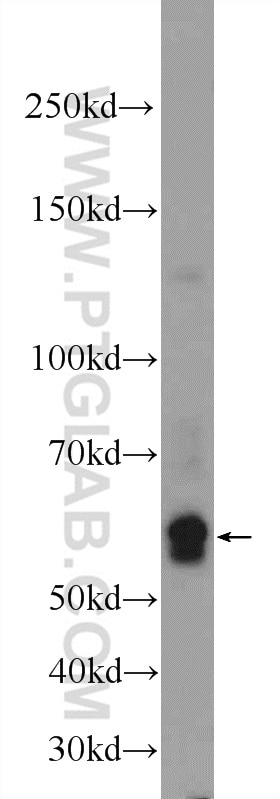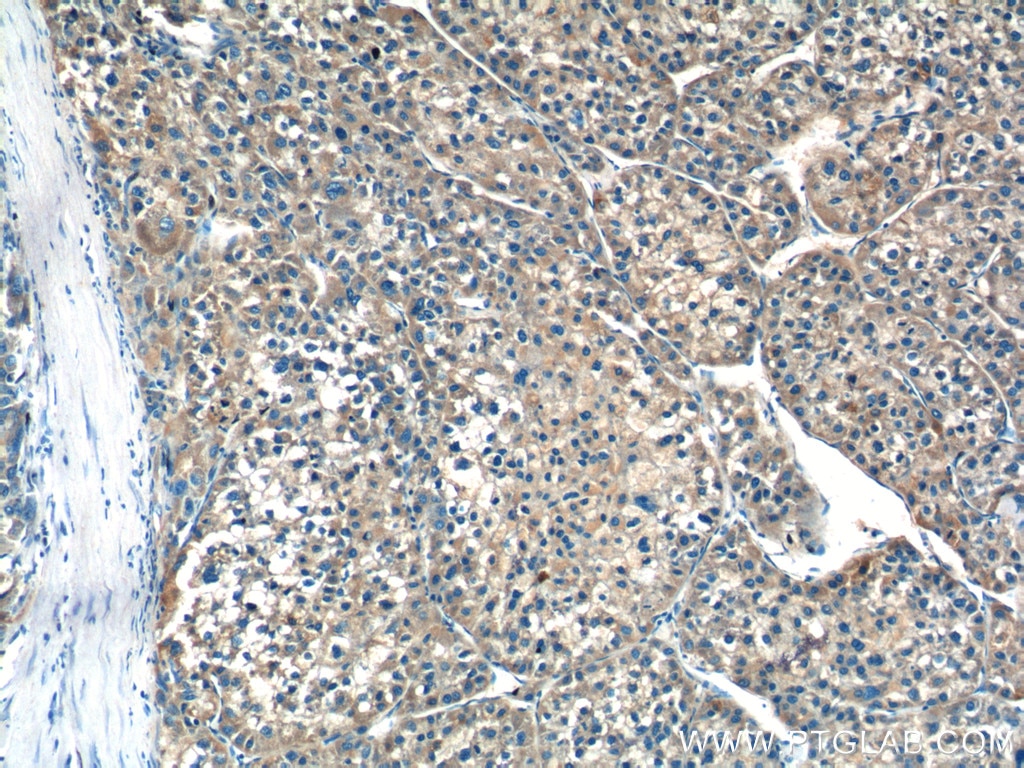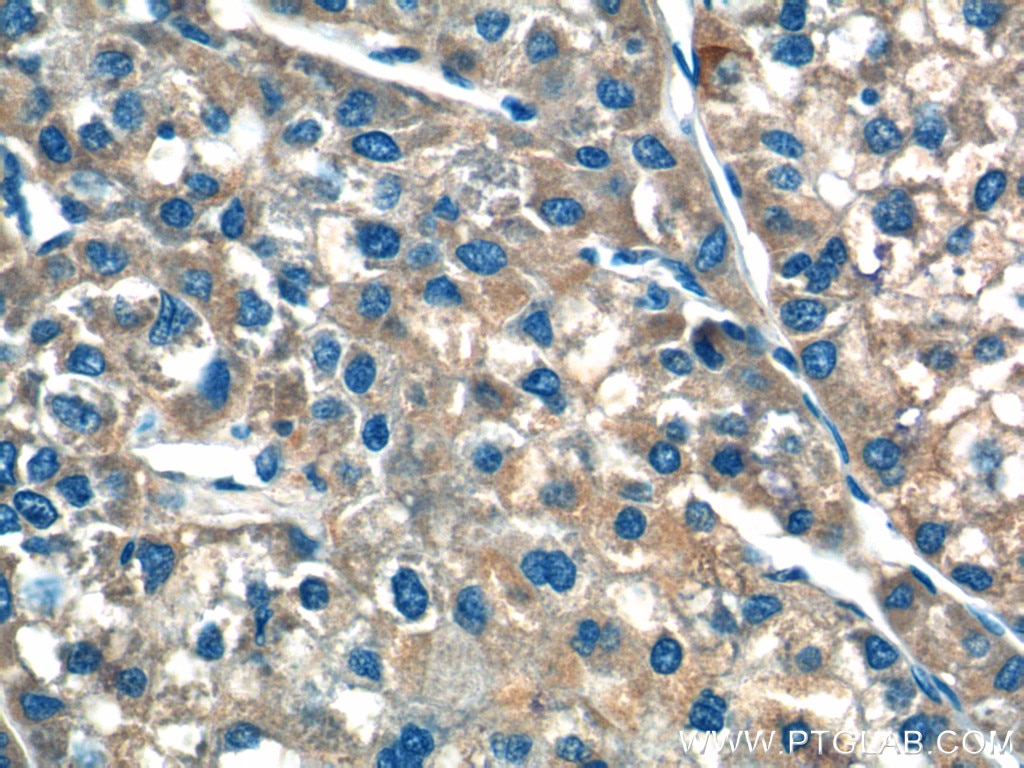- Featured Product
- KD/KO Validated
Factor IX/PTC Polyklonaler Antikörper
Factor IX/PTC Polyklonal Antikörper für WB, IHC, ELISA
Wirt / Isotyp
Kaninchen / IgG
Getestete Reaktivität
human und mehr (2)
Anwendung
WB, IHC, IF, ELISA
Konjugation
Unkonjugiert
Kat-Nr. : 21481-1-AP
Synonyme
Geprüfte Anwendungen
| Erfolgreiche Detektion in WB | mit Tunicamycin behandelte HepG2-Zellen |
| Erfolgreiche Detektion in IHC | humanes Leberkarzinomgewebe Hinweis: Antigendemaskierung mit TE-Puffer pH 9,0 empfohlen. (*) Wahlweise kann die Antigendemaskierung auch mit Citratpuffer pH 6,0 erfolgen. |
Empfohlene Verdünnung
| Anwendung | Verdünnung |
|---|---|
| Western Blot (WB) | WB : 1:500-1:1000 |
| Immunhistochemie (IHC) | IHC : 1:50-1:500 |
| It is recommended that this reagent should be titrated in each testing system to obtain optimal results. | |
| Sample-dependent, check data in validation data gallery | |
Veröffentlichte Anwendungen
| KD/KO | See 2 publications below |
| WB | See 3 publications below |
| IF | See 1 publications below |
Produktinformation
21481-1-AP bindet in WB, IHC, IF, ELISA Factor IX/PTC und zeigt Reaktivität mit human
| Getestete Reaktivität | human |
| In Publikationen genannte Reaktivität | human, Hausschwein, Maus |
| Wirt / Isotyp | Kaninchen / IgG |
| Klonalität | Polyklonal |
| Typ | Antikörper |
| Immunogen | Factor IX/PTC fusion protein Ag15723 |
| Vollständiger Name | coagulation factor IX |
| Berechnetes Molekulargewicht | 461 aa, 52 kDa |
| Beobachtetes Molekulargewicht | 56 kDa |
| GenBank-Zugangsnummer | BC109215 |
| Gene symbol | F9 |
| Gene ID (NCBI) | 2158 |
| Konjugation | Unkonjugiert |
| Form | Liquid |
| Reinigungsmethode | Antigen-Affinitätsreinigung |
| Lagerungspuffer | PBS with 0.02% sodium azide and 50% glycerol |
| Lagerungsbedingungen | Bei -20°C lagern. Nach dem Versand ein Jahr lang stabil Aliquotieren ist bei -20oC Lagerung nicht notwendig. 20ul Größen enthalten 0,1% BSA. |
Hintergrundinformationen
The F9 gene encodes coagulation factor IX, which circulates as an inactive zymogen until proteolytic release of its activation peptide allows it to assume the conformation of an active serine protease. Its role in the blood coagulation cascade is to activate factor X (F10) through interactions with calcium, membrane phospholipids, and factor VIII (F8). Factor IX and factor X both consist of 2 polypeptide chains referred to as the L (light) and H (heavy) chains. The H chain bears a structural resemblance to the polypeptide chain of the pancreatic serine protease trypsin (PRSS1). The L chain is covalently linked to the H chain by a single disulfide bond.
Protokolle
| PRODUKTSPEZIFISCHE PROTOKOLLE | |
|---|---|
| WB protocol for Factor IX/PTC antibody 21481-1-AP | Protokoll herunterladen |
| IHC protocol for Factor IX/PTC antibody 21481-1-AP | Protokoll herunterladenl |
| STANDARD-PROTOKOLLE | |
|---|---|
| Klicken Sie hier, um unsere Standardprotokolle anzuzeigen |
Publikationen
| Species | Application | Title |
|---|---|---|
EMBO Mol Med CRISPR/Cas9-mediated somatic correction of a novel coagulator factor IX gene mutation ameliorates hemophilia in mouse. | ||
Front Neurosci Serum Exosomal Proteins F9 and TSP-1 as Potential Diagnostic Biomarkers for Newly Diagnosed Epilepsy. | ||
Cell Death Dis Genome wide CRISPR/Cas9 screen identifies the coagulation factor IX (F9) as a regulator of senescence.
| ||
Vet Res TRIM28 regulates the coagulation cascade inhibited by p72 of African swine fever virus
|




